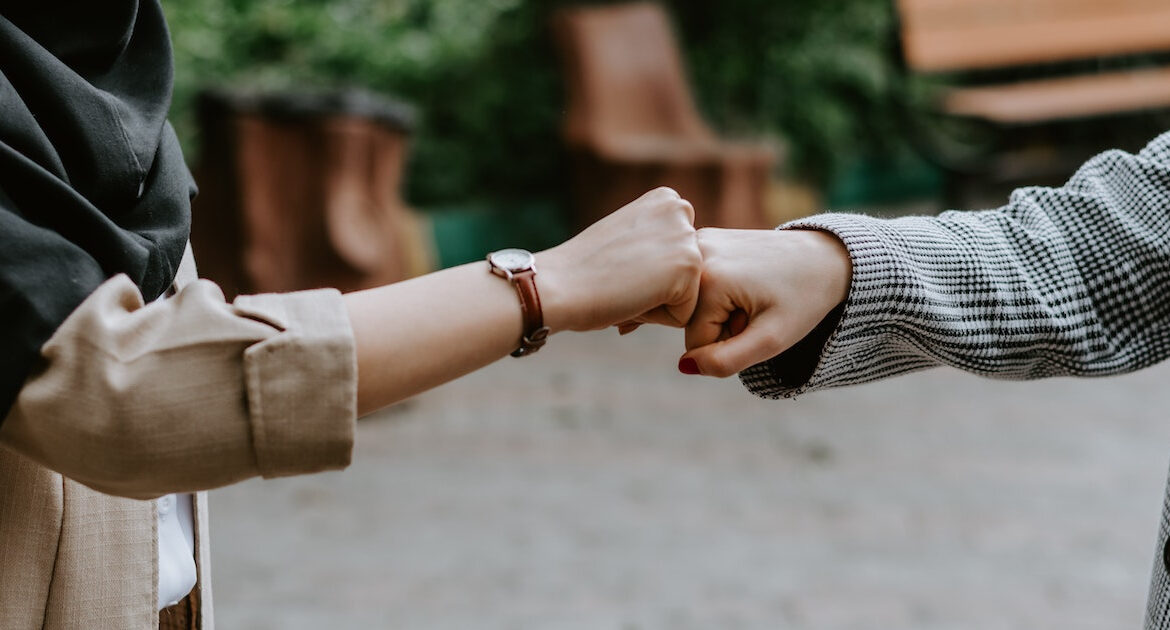What Your Body Language Is Telling The World

Chances are you already know the numbers. The most solid testament we have as a society on how what we don’t say; is just as important, if not more important, than what we do say. That 70 to 93 percent of communication is nonverbal. As a form of communication, body language is transferred through physical behavior, as opposed to something that – technically speaking – is intangible, like words. But from what most experts have found, there’s a lot more body talk going on than otherwise.
So, why should you care? Well, maybe it’s obvious but we all put some effort into the way we present ourselves to the world. Whether it’s through the bare minimum of putting an outfit together in the morning before heading out to our chosen dietary habits and the hobbies or activities, we spend our free time on.
Knowing the signals or voiceless messages you’re sending out, often subconsciously, can lead to a deeper understanding of not only yourself but what others might be thinking and feeling in a variety of social environments and contexts.
Although body language can also convey information in a purposeful way, for example, by using certain hand gestures, manipulating one’s facial expression or even posture and eye contact – part of naturally performing these behaviors is through building up muscle memory reflexes and intuition.
To learn more about conscious and subconscious body behaviors, read on to find out about the most common body language types and which ones you may be exhibiting unintentionally.

Facial Expression
If you know what you’re looking for, the face can say a lot more about a person than you’d normally think. Many might have the impression that they can read any common facial expression, but in reality, there’s a lot that can go unnoticed and it’s no wonder – microexpressions last a fraction of a second and are involuntary responses – meaning they can’t be faked and a person isn’t aware they’re making them.
Standard expressions that are associated with emotions, like raised eyebrows to express surprise, a frown or scowl to indicate sadness or anger, and a smile showing satisfaction or happiness, can seem natural and unplanned, but they aren’t necessarily so. Responding to social cues, being in a certain environment, or even one’s nationality and upbringing are all factors that can play into the expressions people choose to display and whether or not they come from the heart.

Posture
How a person holds up their body (or doesn’t) sends some clear nonverbal messages on what they might or might not be thinking or feeling. Besides the obvious assumptions, like standing straight and showcasing confidence or slouching or hunching over as a lack of it or a physical manifestation of discomfort.
Besides communicating subconscious thoughts and feelings one may have, your posture can give some clear signs of how you feel about the people around you. Depending on how physically close we choose to be to others and how we carry ourselves when in close proximity, you could learn a lot about how comfortable (or not) you truly are around some individuals over others.

Mannerisms
Ever find yourself adding a touch too many ad-libs in conversations? Lots of “um’s” and “ah’s” – less getting fully thought out and coherent sentences? Turns out even the use of crunch words, often unconsciously through speech, is a habitual behavior that falls under one’s mannerisms.
Mannerisms can vary based on culture but there are plenty of universally known gestures or behaviors; it’s just important to keep in mind that they might be tweaked or adapted to that specific culture. For instance, a simple handshake and its meaning extends beyond borders.
But depending on how firm or quick a handshake is expected to be is often determined by cultural standards or norms. For example, travelers acting outside of those norms can imply that they’re not accustomed to the behaviors and are more likely to be perceived or identified as foreigners or tourists.

Physical Touch
You might think that touch is one of the easier body language types to read or pick up signs for. After all, there are numerous connotations strongly associated with physical contact, not unlike globally accepted and practiced behaviors like shaking one’s hand or waving as a welcome greeting or farewell.
However, just because touch is easier to pick up and acknowledge, how one chooses to interact physically with the world and the people around them isn’t as straightforward as it may seem. For one thing, people say a lot nonverbally through touch when it comes to habits or patterns that don’t involve direct contact or interaction with others. How one unconsciously touches themselves can lead to a multitude of interpretations.
Covering one’s face can suggest uncertainty, embarrassment or even pain. While acts like rubbing or itching different parts of their body; like their arm or neck, while in discussion; even while their expression appears normal, can be subtle hints that their mind is elsewhere or that they’re worried or stressed.

Eye Contact
Instinctively, when you feel one’s gaze on you, there’s the inclination to look around and track the source. And it’s no wonder why we have this natural intuition to sense when we’re being looked at, especially if it’s a prolonged gaze.
Humans have always used their eyes for more than the obvious; perceiving and responding to the world around us, it plays a crucial role in many basic nonverbal behaviors and you could go as far as describing it as just as important to communication as speech and verbalized exchanges.
There’s a common saying that eyes tell a different story than what one says or does, and it’s more than likely true. At its simplest, the intention behind establishing and maintaining eye contact with another person is to indicate interest in what one is doing or saying. In many societies, it’s perceived as a fundamental courtesy when engaging in conversation.
Beyond that, one’s eyes and the level of attentiveness they indicate one has in an interaction or exchange can keep it going and naturally drive the flow of the conversation in an encouraging way. If the topic of discussion is related to sad news, the eyes can convey sympathy or concern as well as other emotions that validate what one may be going through, with or without actually saying anything.
Sarah Lowe
Latest posts by Sarah Lowe (see all)
- What It Means To Be Privacy-Conscious - April 25, 2024
- How To Thrive as an Introvert in an Extroverted Family - April 18, 2024
- Learning To Say No as an Introvert - April 18, 2024






